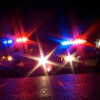 In my travels this week I was overtaken by marked emergency vehicles travelling at 110 km/h in the posted 90 km/h zone. No emergency lights were being operated. Instances like this are often complained about by the public as they see the police failing to follow the same traffic rules that they force everyone else to obey.
In my travels this week I was overtaken by marked emergency vehicles travelling at 110 km/h in the posted 90 km/h zone. No emergency lights were being operated. Instances like this are often complained about by the public as they see the police failing to follow the same traffic rules that they force everyone else to obey.
Exemption for Emergency Vehicles
So, lets examine the rules that allow the police, fire and ambulance drivers to disobey some traffic rules and what they must do the exercise these privileges.
These privileges are granted in section 122 of the Motor Vehicle Act. It allows the driver to:
- Exceed the speed limit
- Not stop for red lights or stop signs
- Disregard rules and traffic control devices governing direction of movement or turning in specified directions
- Stop or park
This must be done with due regard for safety, having regard to all the circumstances of the case, including:
- The nature, condition and use of the highway
- The amount of traffic that is on, or might reasonably be expected to be on the highway
- The nature of the use being made of the emergency vehicle at the time
Special Conditions for Pursuits
The Emergency Vehicle Driving Regulation places additional conditions on the driver depending on whether or not is is a pursuit, an emergency response by a police officer or emergency response by fire or emergency medical services.
No Emergency Equipment At All
Police may respond without using emergency lights and siren to an incident where the risk of harm to the public through using emergency equipment outweighs the risk of responding without it.
In the general execution of their duties police must have reasonable and probable ground to believe it is safe to operate without emergency equipment. This exemption does not apply in school and playground zones.
Fire Trucks and Ambulances
Fire trucks and ambulances may not disobey traffic rules unless emergency lights and siren are activated with the exception of stopping, standing or parking. In that case only emergency lights are required to be used.
Highway Maintenance Exemptions
There is another group of road users that are not emergency vehicles but may disregard the rules for traffic movement. Persons, vehicles and other equipment while actually engaged in highway or public utility, construction or maintenance work on, under or over the surface of a highway while at the site of the work are exempt.
Of course, they must execise the same care and are governed by the Occupational Health and Safety Regulation for traffic control while doing so.
I hope that the police vehicle that passed me was really involved in a situation that required both speed and stealth.
Share This Article
Don't be disappointed if he was just cruising down the highway. You didn't mention how many lanes there was but if it was a 4 lane section where one is suppose to keep right except to pass I would assume that he kept motoring along in the left lane breaking another law. You didn't notice if he had his DRL activated? Another item that can only be turned off when doing surveillance work.
From my own experience I have been tailed and followed police vehicles travelling at 120 or more in 90 zones.
If you check out Youtube there have been American TV stations that have monitored speeding police vehicles. One driver when he arrived at his destination was the police drivers training academy and he got out of his vehicle with INSTRUCTOR written across the back of his jacket. Best one has more than one vehicle going into a donut shop for their coffee break.
Spending most of my time on open highways I find that the majority of police vehicles are in excess of the posted limits. Have also found especially in 90 zones that you will never be ticketed for doing 110 and it has been 15 years since I was pulled over for doing 120.
- Log in to post comments
Police may respond without using emergency lights and siren to an incident where the risk of harm to the public through using emergency equipment outweighs the risk of responding without it
Can you provide a scenario that would actually justify this maneuver? I am assuming the police are in excessive of the posted speed and responding to a call.
I ask because, when I went through 9 months of Auxiliary training I remember distinctly that the ‘law’ at that time (1992] was police could not travel outside the posted limit UNLESS their lights/&/or sirens were activated. I am interested to know what definition of ‘risk’ would be greater if they were not activated?
- Log in to post comments
- Log in to post comments

Don't be disappointed if he